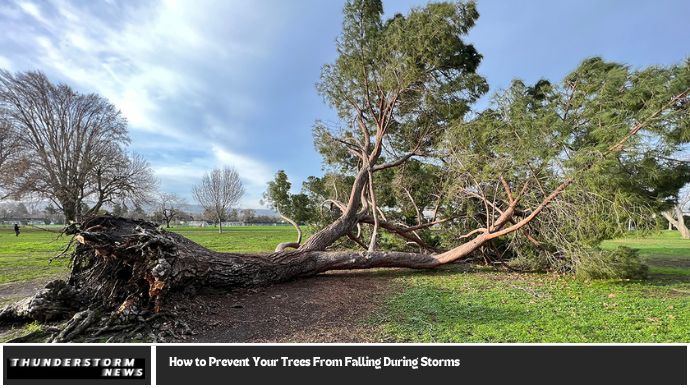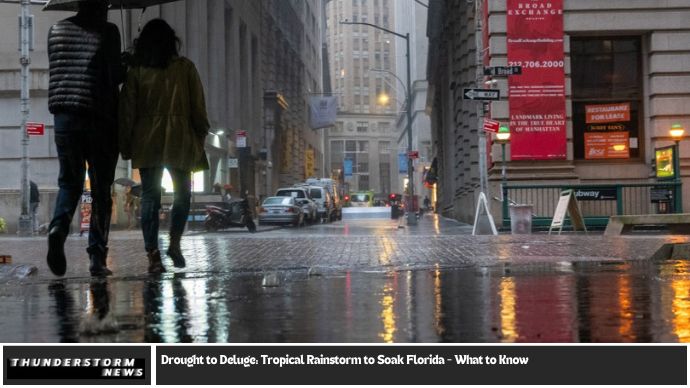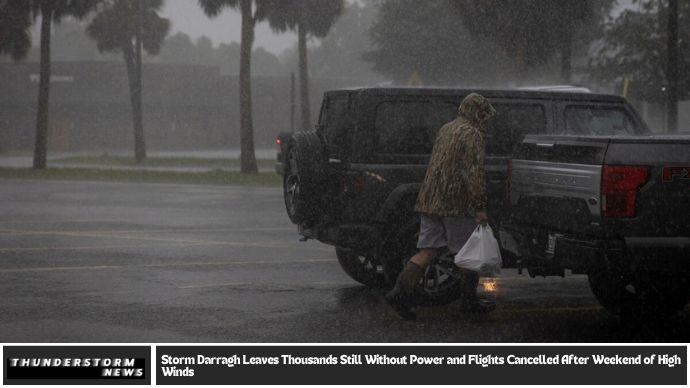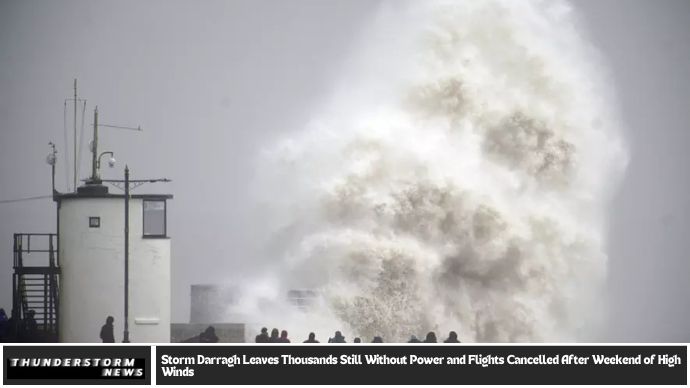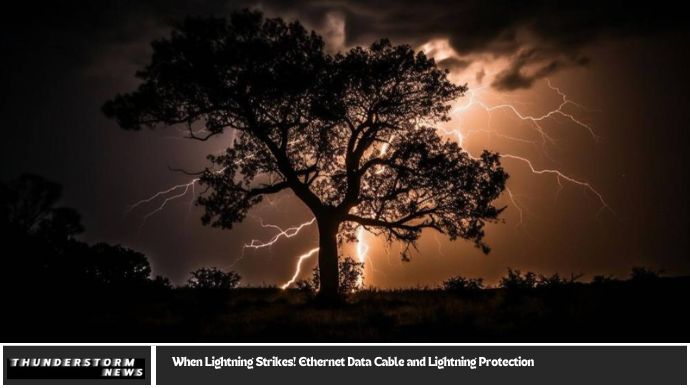Storms can be unpredictable, and when the weather gets rough, one of the most significant threats to your property are trees. If you’ve ever seen a giant oak or pine topple over, causing damage to homes, cars, or power lines, you know how scary it can be. As much as we love our trees for the beauty and shade they provide, they can be dangerous during storms if not properly maintained.
The good news is that with regular tree maintenance and a little bit of knowledge, you can greatly reduce the risk of your trees falling during a storm. So let’s dive into practical tips on how to keep your trees healthy and storm-ready. With the right preparation, you can ensure your trees stand tall and strong no matter what the weather brings.
Why Do Trees Fall During Storms?
Before we discuss how to prevent trees from falling, it’s important to understand why they fall in the first place. During a storm, trees are exposed to high winds, heavy rain, and sometimes snow or ice. These extreme weather conditions can weaken trees in various ways.
Some trees fall due to structural weaknesses like decaying roots, cracked trunks, or broken branches. Others may simply be uprooted due to excessive rain saturating the soil around their roots, making them less stable. Trees with shallow root systems, for example, are more vulnerable to being uprooted. Additionally, trees in poor health or those that have not been properly maintained are at a higher risk of failure during a storm.
Regular Tree Inspections: The First Step to Preventing Damage
The most important step in preventing your trees from falling during storms is regular inspections. Like any other part of your property, trees need a little TLC now and then. A thorough inspection helps you identify potential issues before they turn into disasters.
Start by checking for any dead or broken branches. If a tree has large, unstable limbs hanging over your home, driveway, or power lines, it’s essential to trim them before the storm season. Also, look for any signs of disease, pests, or rot, as these can weaken the tree and make it more likely to fall. Don’t forget to inspect the base of the tree for any leaning or soil erosion, which can indicate root instability.
How Tree Trimming Helps Prevent Storm Damage
One of the most effective ways to prevent your trees from falling is through regular tree trimming. Trimming helps remove weak, dead, or overgrown branches that are more likely to break during a storm. Keeping the canopy of your tree balanced is key to ensuring it stands firm during high winds and heavy rain.
Proper trimming also promotes healthy growth. By removing deadwood and thinning out crowded branches, you allow more light and air to reach the rest of the tree, improving its overall health and structure. In turn, a healthy tree is less likely to suffer from stress during a storm.
The Benefits of Tree Trimming:
- Reduces the weight of branches that might snap under pressure.
- Improves the tree’s structural integrity by eliminating weak points.
- Prevents the tree from being top-heavy, which can lead to uprooting.
- Helps the tree withstand wind by reducing wind resistance.
Tree Removal: When It’s Time to Let Go
While tree trimming is important, there comes a time when removing a tree is necessary for safety. If a tree is too damaged, diseased, or structurally unstable, no amount of trimming can make it safe. In these cases, removing the tree is the best option.
If you notice that a tree is leaning excessively, has large cracks or cavities in the trunk, or shows signs of root damage, it’s a good idea to consult with a professional arborist. They can assess the tree’s condition and help you determine whether removal is necessary. Trees that are near power lines, homes, or roads should be carefully monitored and removed if they pose a risk.
Signs It’s Time to Remove a Tree:
- Large cracks or hollows in the trunk.
- Extensive root damage or visible root decay.
- Leaning trees that could fall in high winds.
- Trees that are dead, diseased, or infested with pests.
Proper Tree Root Care: Strengthening the Foundation
The roots are the foundation of a tree, and ensuring their health is critical to preventing trees from falling. Healthy, deep roots anchor a tree firmly in the soil, making it less susceptible to being uprooted during storms. Shallow or damaged roots, however, can leave a tree vulnerable to tipping over.
To promote strong root systems, avoid compacting the soil around your trees. Compacted soil can suffocate the roots, preventing them from receiving the nutrients and water they need. Additionally, be cautious when using lawn equipment near trees, as this can inadvertently damage the roots. Adding mulch around the base of the tree helps retain moisture and regulates the soil temperature, promoting healthy root growth.
The Importance of Professional Tree Care
While DIY tree maintenance can be effective for smaller jobs, it’s important to hire a professional arborist for larger or more complex tasks. Arborists are trained to identify and address tree health issues that you might miss. They have the tools and expertise to safely trim, remove, or treat trees without causing harm to the tree or surrounding property.
In addition to tree trimming and removal, an arborist can provide advice on how to best care for your trees to prevent future storm damage. They can also help you assess whether additional support, such as cabling or bracing, is necessary for particularly large or vulnerable trees.
How to Support Your Trees During Storm Season
In addition to regular maintenance, there are a few extra steps you can take to help support your trees during storm season. One option is to install tree supports like braces or cables, which can help stabilize large trees with weak or asymmetrical trunks. These supports reduce the risk of branches breaking or trees toppling over in high winds.
You can also protect younger or newly planted trees by using stakes to help stabilize them as they grow. Be sure to remove the stakes once the tree is established to avoid restricting root growth.
Additional Steps for Storm-Proofing Your Trees:
- Install cabling or bracing for large trees with structural weaknesses.
- Use stakes for young trees to keep them steady.
- Add mulch around the base of trees to retain moisture and protect the roots.
Emergency Tree Care: What to Do After a Storm
Even with the best preparation, storms can still cause damage. After a major storm, it’s important to assess the condition of your trees. Look for any fallen branches, leaning trees, or damage to the trunk and roots. If you notice any problems, contact a professional arborist immediately for an assessment.
In some cases, trees may appear fine but could have internal damage that makes them more vulnerable in future storms. A post-storm inspection is essential to ensure that your trees remain safe and healthy going forward.
FAQs
1. Why do trees fall during storms?
Trees often fall during storms due to weak branches, decaying roots, or excessive water in the soil that makes the roots less stable.
2. How can I tell if my tree is at risk of falling?
Signs of risk include leaning, large cracks in the trunk, or signs of disease or pest infestation.
3. What is the best time of year for tree trimming?
Late winter or early spring is typically the best time for tree trimming, as the tree is dormant and can heal faster.
4. Can I trim my own trees, or should I hire a professional?
While basic trimming can be done yourself, for larger trees or complex jobs, it’s best to hire a professional arborist.
5. What are the signs that a tree needs to be removed?
Signs include excessive leaning, large trunk cracks, root damage, or when the tree is dead or severely diseased.
6. How do I protect my tree roots?
Avoid compacting the soil around the tree, add mulch to retain moisture, and be cautious with lawn equipment near the roots.
Conclusion
Taking proactive steps to care for your trees is the best way to prevent storm damage and keep your property safe. Regular trimming, root care, and, when necessary, tree removal can go a long way in ensuring that your trees stay strong during storms. Don’t wait for the storm to hit—take action now to protect your trees and your home. Investing in tree maintenance today can save you from costly repairs and potential hazards down the line.

